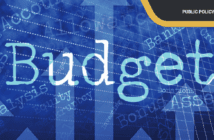By CPA Moenga Elvis
Social health insurance (SHI), also known as public health insurance or national health insurance is a system in which the government or a designated authority collects funds from the population to provide healthcare services to its citizens. The goal is to ensure that everyone has access to necessary medical care without facing financial hardship.
The Government of Kenya released four new health bills to accelerate progress towards the goal of universal health coverage. The bills have since been passed by parliament and gazetted setting in motion far-reaching reforms to how health services are financed and delivered in Kenya. Among these bills is the Social Health Insurance Bill, which proposes extending health insurance to all Kenyans based on member contributions, with government-subsidized coverage for the poor. It also mandates the creation of three funds to cover different types of services: Primary Healthcare Fund, Social Health Insurance Fund & the Emergency, Chronic & Critical Illness Fund; and a new government agency to replace NHIF known as the Social Health Authority (SHA).
The ambitious plan to ensure Universal Health Coverage (UHC) is the centerpiece of SDG-3, which signifies that all people should have access to quality health services, when in need, without facing any financial hardship. In Kenya, it is estimated that only 20% of citizens are under the NHIF scheme with the majority 80% mainly in the informal sector ostensibly not being covered.
Bringing onboard the informal sector remains one of the greatest hurdles in the governments quest in driving change through policy shifting the burden to the meagre 20% in the formal sector who can easily be identified through employer-employee relationships. The new law seeks to make it mandatory for all citizens to be registered under the scheme in order to benefit from medical care as opposed to the predecessor scheme (NHIF) which had an opt out option for the informal sector.
The creation of the three separate funds is also a novel idea to unbundle the behemoth that was NHIF owing to the multiplicity of its functions which often led to conflicts of interest. Earmarking of funds not only ensures traceability of funding but will go a long way into cascading the same as health systems adapt to the devolved units at county level. Another laudable aspect is that administration expenses of the fund is capped at 5% of annual fund expenditure meaning wastage will need to be kept in check by the management.
Even more forward looking is the creation of a dedicated fund for Emergency, Chronic & Critical Illnesses. On exhaustion of a members cover under SHI, the fund would automatically kick in to ensure households are protected from the financial burden that is associated with chronic & critical illnesses. By now, many of us have been affected directly or indirectly by such either through family, relatives, friends or even ourselves leading to financial strain and crowdfunding to offset medical bills.
While the SHA is a welcome move, there are obvious hurdles that will stand in the way of its implementation key among them being onboarding of the informal sector. As over 80% of workers are engaged in informal employment and subsistence agriculture, the new law proposes that individuals and households without formal earned income will be subject to an annual SHIF contribution based on household income determined through a methodology known as means testing.
Means testing in the context of social health insurance refers to the process of evaluating an individual’s financial means or income level to determine their eligibility for health insurance benefits or subsidies. The goal is to target assistance to those who have limited financial resources and may face challenges in affording healthcare services. Means testing helps ensure that scarce resources are allocated efficiently, directing support toward individuals or households with genuine financial need.
In order for means testing to work, certain critical steps are necessary. The first step would be income assessment of individuals or households. This assessment considers various sources of income, such as wages, salary, investments, and other financial resources. The other step would be to develop thresholds and criteria which would determine eligibility. Individuals or households with incomes below the established threshold may qualify for health insurance benefits or subsidies.
The application criteria would also need to be clear and concise. Means testing essentially targets households whose income is not derived from salaried employment, such persons would need to submit an application that includes details about their income and financial situation. This information is used to determine contribution premiums. The obvious risk here is that people would want to understate their income in order to pay reduced premiums.
The other factor to consider is that incomes are variable. There will be need for periodic reviews to ascertain that the thresholds and criteria developed above are still relevant as economic circumstances change. How the government plans to do this is still unclear given how databases in government exist separately. Factors such as household size, exclusions or deductions a well as graduated benefits will also come into play.
Finally, a lot of data will be collected during this process hence the need to adhere to data protection laws. Governments and health insurance programs handling means testing information are expected to maintain strict confidentiality to protect the privacy of individuals undergoing assessment. Given the extent of data collection envisaged in the registration process, the government might also consider integration of data across ministries and the revenue authority so that the data underlying premium assumptions is robust and reliable.
Means testing aims to strike a balance between providing essential health coverage to those who need it most while ensuring the efficient use of financial resources. The effectiveness of means testing in social health insurance depends on the accuracy of income assessments, fair eligibility criteria, and transparent processes.
Given the level of complexity envisaged by means testing, it is doubtful that the new funds will get off to a blistering start. The integrity of data collected and continuance assessment will require a multi-agency approach in order for the new scheme to be successful. Leveraging of digital health platforms will also reduce cost and alleviate the administrative burden. Overall, while this will be a game changing law, there will definitely be bumps on the road. Policymakers would need to be brave enough to stay the course and iteratively improve on the systems as they go.
An even greater incentive to get means testing right would be the fact that the Housing levy which has since been rendered unconstitutional was halted by the High court owing to the fact that it was against the principle of equity in that salaried citizens seem to have been targeted adversely by the tax, bearing the burden on behalf of the larger population.
Successful health reform must not just make health insurance affordable, affordable health insurance has to make health care affordable – Elizabeth Edwards.
CPA-K, PGD Tax [email protected]




